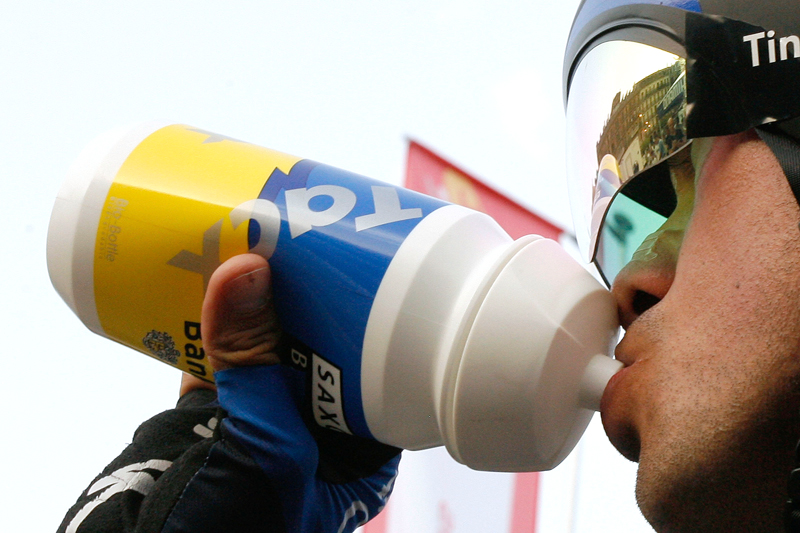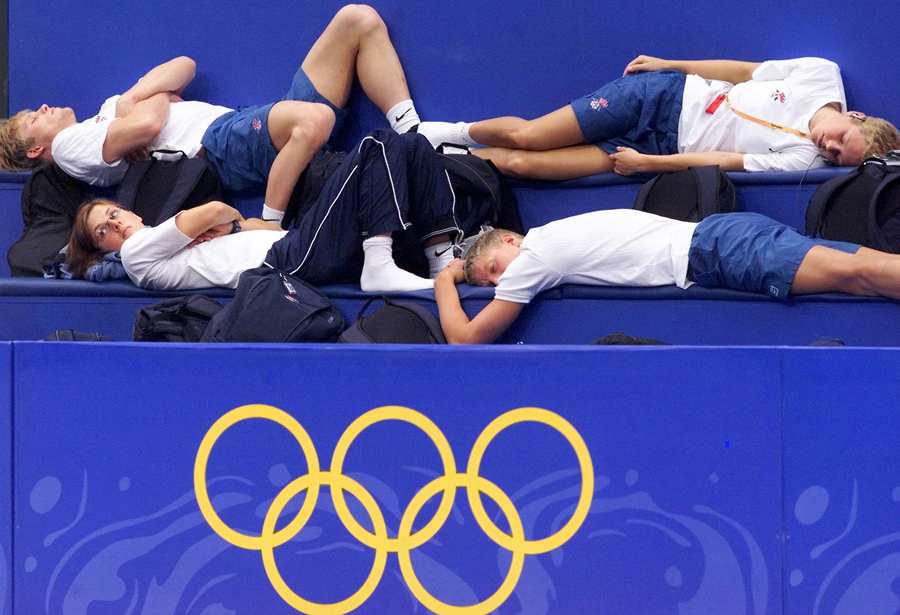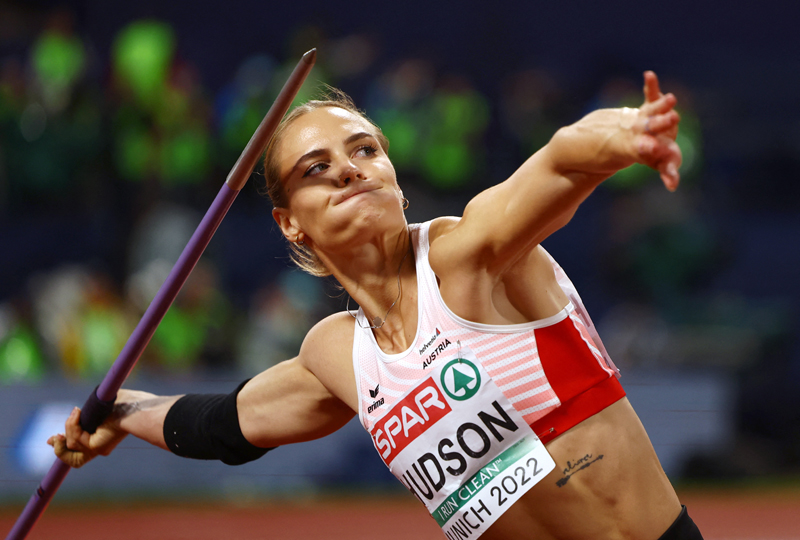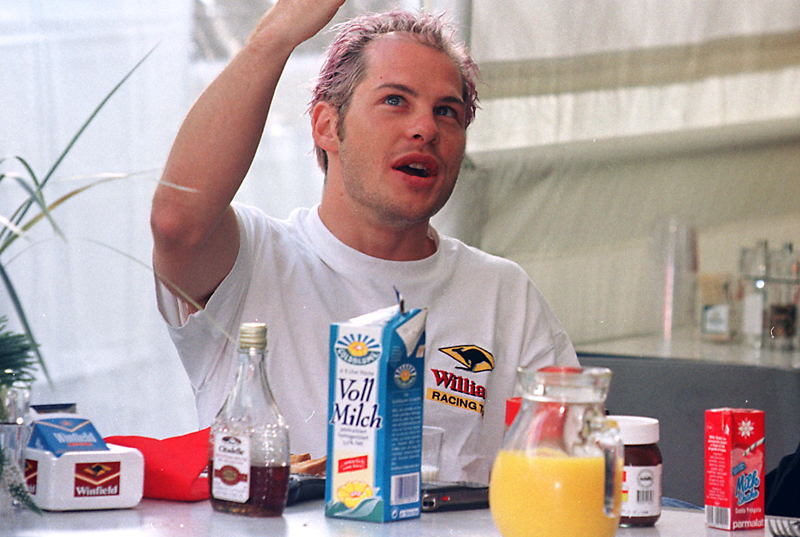You are viewing 1 of your 1 free articles. For unlimited access take a risk-free trial
Hydration: how to calculate your personal fluid needs

In previous Sports Performance Bulletin articles, I wrote about some of the work on testing of fluid balance I have been engaged in with professional football clubs. This work has provoked much interest in the football world and carries some important lessons for athletes in other sports too. The key finding to emerge from those studies is that there is no standard answer to the following questions commonly asked by athletes:
- What is the best drink?
- How much of it should I consume?
Many expert committees have toiled long and hard over the questions, but none has as yet had the courage to admit that they cannot come up with an answer. This has led to the publication of numerous sets of guidelines that appear, at first sight, to provide answers.
The American College of Sports Medicine (ACSM), for example, has published guidelines for endurance athletes recommending that ‘During exercise, athletes should start drinking early and at regular intervals in an attempt to consume fluids at a rate sufficient to replace all the water lost through sweating (ie body weight loss), or consume the maximal amount that can be tolerated’ (1).
The ACSM also advises: ‘During intense exercise lasting longer than 1h, it is recommended that carbohydrates be ingested at a rate of 30-60 [grams per hour] to maintain oxidation of carbohydrates and delay fatigue. This rate of carbohydrate intake can be achieved without compromising fluid delivery by drinking 600-1,200 [ml per hour] of solutions containing 4%-8% carbohydrates (ie 40-80g per 100ml).
The International Marathon Medical Directors Association (IMMDA) has recommended a fluid intake of something between 400 and 800 ml per hour, with the higher rates being appropriate for faster or heavier runners and the lower rates for slower runners and walkers (2).
The problem with both sets of recommendations is that they are too inflexible. The ACSM guidelines can be interpreted as encouraging runners to drink as much as they can: this may be more than is necessary and can lead to problems of water overload and even hyponatraemia (a potentially dangerous fall in the blood sodium level – see box on page 2). Even at the narrower range set by the IMMDA, 400ml will not be enough for a heavy runner on a hot day, while 800ml is likely to be too much for a light runner taking five hours to complete a marathon on a cold day.
The only sensible advice is for individual athletes to take personal responsibility for developing their own hydration plan, and this is implied in the first ACSM recommendation, encouraging runners to drink just enough to replace fluid lost in sweat. That means looking at what you currently do, assessing that against what you should be doing and seeing if any changes need to be made. There are now many surveys of how much people drink in endurance races, and of how much these same people sweat.
If we look at what people actually do, we can use as an example a paper published by Tim Noakes and his colleagues in the British Journal of Sports Medicine last year (3). They weighed 258 competitors before and after an Ironman distance triathlon held in South Africa in 2000 and 2001. Analysis of the results showed that weight change ranged from a loss of 8.0kg (10.7% of the pre-race weight) to a gain of 3.0kg (3.7%). In other words, some people finished the race severely dehydrated while others drank so much that they gained weight. There was no measure of how much fluid competitors consumed during the race, but we can guess that those who lost most weight probably drank a lot less than those who gained weight.
Footballers’ fluid intake
I and my colleagues have measured the fluid intakes of many top football players in training; it’s a simple matter of weighing their drinks bottles before and after training, having made sure that they drink only from their own bottles – and that no-one else does! We saw that some players would put away almost two litres of fluid in a 90-minute training session while others drank almost nothing. They all did the same training and they all had access to the same drinks, so why this large difference?At present, there are no good explanations for why some people sweat copiously while others hardly sweat at all. If you’re a sweaty person, you just have to learn to cope with it. What we do tend to find, though, is that those who drink most are not necessarily those who sweat most; and this is consistent with the belief that thirst is not closely related to sweat loss – at least not when this amount is relatively small – and therefore not a reliable guide to fluid needs.
There is some evidence that the people who drink most are those who begin a training session already dehydrated: we don’t yet know if this applies to a race situation, but it seems reasonable to suspect that it does.
The fact that fluid gains and losses could be measured in so many competitors in a race situation and in top professional footballers in training shows it’s not hard to do. In fact, it can be achieved by anyone with access to a set of scales. Just weigh yourself before and after a long run and you’ll have a good idea of whether you are a sweaty runner or not. Sweaty runners should probably be encouraged to drink more than their counterparts who merely ‘glow’ while exercising.
How much should you drink?
There has been a tendency to move away from the ACSM suggestion that everyone should aim to replace as much fluid as they lose in sweat with the aim of finishing the race weighing the same as when they started. There is probably no real danger to either performance or health from mild levels of dehydration. Yes, severe dehydration will certainly result in a loss of performance capacity, but a little dehydration means less weight to carry over those last few miles, and that may confer some benefits.As a rule of thumb, during an endurance event you should aim to drink just enough to be sure you lose no more than about 1-3% of your pre- race weight. That may seem a difficult strategy to put in place, but all you need are a set of scales, some common sense and a sense of personal responsibility.
First, you need to record your body weight before and after as many of your long runs as you can. Weigh yourself at the last minute before going out, after that last-minute visit to the toilet. It is best to do this without any clothes, as even a vest and shorts can soak up a lot of sweat and make you seem heavier after the run than you really are.
Weigh yourself as soon as you get back again and note the two measurements in your training diary. (You do keep a training log, don’t you? At any rate you should if you are at all serious about training.) You should also log the approximate distance and duration of the run, and perhaps also how you felt while running. Make a note, too, of whether you were wearing T-shirt and shorts or full tracksuit, hat and gloves.
If you have had anything to drink during the run, you need to know how much and add it to the amount of weight lost. Kitchen scales are perfectly good for weighing your drinks bottle. However, if you use a bottle with calibration marks on the side, you don’t need to weigh it at all. You’ll soon get the hang of this weighing and measuring, and once it is part of your routine it should be no inconvenience at all.
The sums are much easier to calculate if you work in kilograms and litres rather than pounds and pints, since 1kg of weight loss is roughly equal to one litre of sweat, while 1lb of weight loss is four fifths of a (standard British) pint. There are some errors in these calculations, as you will also be using up some stored fuels in the form of carbohydrate and fat, but these can be ignored with no great loss of accuracy.
Another thing to note is the weather conditions. Your local paper will give you the temperature for the previous day, so you can look this up and add it to your other measurements. Ideally, you should also note the humidity (information available from your nearest weather station and on the internet). How much effort you put into gathering this data will depend on how serious you are about going for that performance on race day.
After a few weeks, you should begin to see some patterns emerging. You will probably lose more weight (sweat) on longer runs, when you run faster, or when the weather is warmer or more humid. You can get rid of the first of these sources of variability by calculating your sweat rate per hour. This may be as little as 200-300ml or as much as 2-3 litres, depending on your physiology, your running speed, clothing and conditions. If you collect enough measurements, you should be able to allow for each of these factors and get an idea of how much you should be drinking in any given set of conditions.
Once you know what your sweat losses are likely to be in a particular set of conditions, you can plan for race day. You know the distance, you know how fast you plan to run and you have seen the weather forecast. That’s all you need to know in order to plan your drinking strategy.
Two hypothetical examples
Let’s take a look at how this might work in practice, using two different hypothetical examples:- You weigh 70kg and you plan to run for three hours at a temperature of 20°C. You know that you sweat about 1 litre per hour at this pace and temperature, so you can expect to lose about three litres of sweat. Because you want to lose no more than about 2-3% of your body weight – that’s 1.42.1kg, or 1.4-2.1 litres of fluid – you should aim to drink something between 900ml and 1.6 litres during the race. That’s about 300-500 ml per hour, rather less than most of the recommendations suggest and probably a lot more comfortable.
- You weigh 60kg and plan to run 10 miles in about 62 minutes on a hot day (about 25°C). You will sweat about 2.2 litres in that hour. A 2-3% loss in body weight represents 1.2-1.8 litres of fluid, so you should plan to drink about 400-1,000ml. This is a wide range, and you can probably opt for something near the lower end of it.
Ron Maughan
References
- www.acsmmsse.org/pt/ptcore/templatejournal/msse/media/0196.htm
- Clin J Sports Med 2003 Sep:309-18
- Br J Sports Med 2004, 38; 718-724
Newsletter Sign Up
Testimonials
Dr. Alexandra Fandetti-Robin, Back & Body Chiropractic
Elspeth Cowell MSCh DpodM SRCh HCPC reg
William Hunter, Nuffield Health
Newsletter Sign Up
Coaches Testimonials
Dr. Alexandra Fandetti-Robin, Back & Body Chiropractic
Elspeth Cowell MSCh DpodM SRCh HCPC reg
William Hunter, Nuffield Health
Keep up with latest sports science research and apply it to maximize performance
Today you have the chance to join a group of athletes, and sports coaches/trainers who all have something special in common...
They use the latest research to improve performance for themselves and their clients - both athletes and sports teams - with help from global specialists in the fields of sports science, sports medicine and sports psychology.
They do this by reading Sports Performance Bulletin, an easy-to-digest but serious-minded journal dedicated to high performance sports. SPB offers a wealth of information and insight into the latest research, in an easily-accessible and understood format, along with a wealth of practical recommendations.
*includes 3 coaching manuals
Get Inspired
All the latest techniques and approaches
Sports Performance Bulletin helps dedicated endurance athletes improve their performance. Sense-checking the latest sports science research, and sourcing evidence and case studies to support findings, Sports Performance Bulletin turns proven insights into easily digestible practical advice. Supporting athletes, coaches and professionals who wish to ensure their guidance and programmes are kept right up to date and based on credible science.









